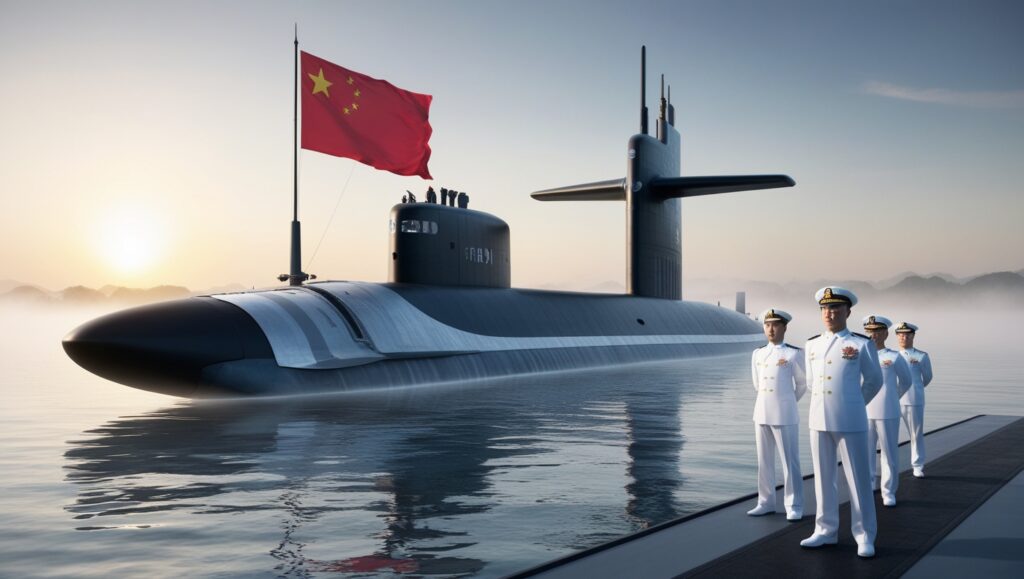China’s Nuclear Submarine Sinks: A Major Setback for the PLA Navy

China’s Nuclear Submarine
In a significant development that underscores the challenges facing China’s military modernization, U.S. officials have confirmed that China’s newest nuclear-powered attack submarine, the Zhou-class, sank while docked at the Wuchang shipyard near Wuhan between May and June 2024. This incident represents a considerable embarrassment for Beijing as it seeks to enhance its naval capabilities and achieve parity with the United States.
Incident Overview
The Zhou-class submarine, characterized by its advanced design aimed at improving maneuverability, reportedly sank alongside a pier during construction. Satellite imagery played a crucial role in revealing the incident, showing cranes and salvage operations at the shipyard shortly after the sinking occurred. Despite attempts by Chinese authorities to conceal the event, it became public knowledge through various intelligence sources and media reports, notably from The Wall Street Journal.
Implications for China’s Naval Ambitions
- Setback in Military Modernization:
- The sinking of this submarine is a significant blow to China’s ambitions to expand its naval fleet, which is already the largest in the world with over 370 ships. The PLA Navy’s goal is to grow its submarine force from 48 diesel-powered attack submarines and 12 nuclear-powered vessels to approximately 80 by 2035.
- Concerns Over Military Oversight:
- U.S. defense officials have raised questions about the internal accountability and oversight within the People’s Liberation Army (PLA), particularly regarding training standards and equipment quality. The incident highlights long-standing issues of corruption and inefficiency within China’s defense industry.
- Potential Environmental Risks:
- While it remains unclear whether the submarine was carrying nuclear fuel at the time of its sinking, experts have suggested that it likely was. However, no reports of radiation leaks have emerged since the incident. The lack of transparency from Chinese authorities regarding any potential environmental assessments further complicates this situation.
Reactions and Future Considerations
- International Response:
- Taiwan’s Defense Minister Wellington Koo indicated that Taiwan has been monitoring China’s military activities closely, suggesting that they are aware of developments surrounding this incident through various intelligence methods. The U.S., meanwhile, continues to strengthen ties with regional allies in response to China’s assertive military posture.
- Strategic Impact:
- Analysts suggest that this incident could delay China’s plans to bolster its nuclear submarine fleet, which is considered vital for maintaining a credible deterrent against perceived threats from the U.S. and its allies in the Indo-Pacific region.
- Military Readiness Questions:
- The sinking raises broader questions about China’s military readiness and capability. Observers note that effective military operations require not only advanced technology but also well-trained personnel capable of operating such systems in real-world scenarios
5
- The sinking raises broader questions about China’s military readiness and capability. Observers note that effective military operations require not only advanced technology but also well-trained personnel capable of operating such systems in real-world scenarios
Conclusion
The sinking of China’s newest nuclear submarine serves as a stark reminder of the complexities involved in military modernization efforts. As China continues to invest heavily in its naval capabilities, incidents like this highlight vulnerabilities within its defense sector and raise critical questions about operational readiness. Moving forward, how China addresses these challenges will be pivotal in shaping its military strategy and regional influence.






